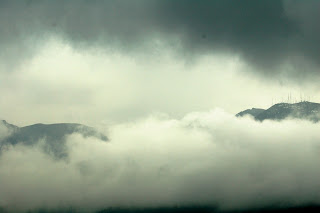Panama hats do in fact originate from Ecuador. They were made in Cuenca in the early 1800's and continue to be produced there. They were called 'Panama' hats because they were shipped from Ecuador to the Panama canal before being sent to Asia or Europe or elsewhere, so they were given the name for their port of origin, rather than their place of origin. When I went to Cuenca several years ago, I did visit a hat factory (they hats are all made by hand from a certain type of palm leaf) and found that the range of prices for the hats was remarkably broad, that some people pay hundred of dollars for a hat. The remarkable characteristic of the hat is that it will spring back into shape after being squished. I do not see many Panama hats in Quito. Instead, most of the women and the men dressed in traditional attire wear felt hats.


Panama Hats Made From Palm Leaves
The felt hats are originally of Spanish origin, but Ecuadorians soon learned how to make them using sheep wool and felting. This is a good example of 'synchretism', or the melding of two or more cultures: the hats are now part of the picture of the Ecuadorian from the countryside and the traditional outfit is not complete without one.




Inti Raimi Costumes and Hats
Eric has bought a felt hat, or perhaps several felt hats over the years, and wears one quite regularly to manage sun exposure. He looks good in a hat, although not particularly Ecuadorian.
I wonder if wearing a hat would be helpful the last two days, when I have been caught in a deluge. I was in the Centro Historico without an umbrella when the rains started heavily, incessantly, and I could not wait for the rain to stop, which it appeared everyone else was doing. I always have to be at a certain place at a certain time, so I braved the lightning and the downpour to run for the Ecovia station. Once I got home, I was soaking wet and had to change my clothes and shoes before I ventured forth again. I am told this is winter for Ecuadorians; sunny in the morning, lots of changes during the day, with sunshine as well as the invariable rain. Taxis are difficult to find on such days; everyone is hailing cabs, so it takes much longer to get Maya anywhere. Winter will last through April! Seasons include 'winter-wet' and 'summer-dry', so winter has just started.


 Otavaleno Women Do Not Wear Hats
Otavaleno Women Do Not Wear Hats

 Evening Pichincha
Evening Pichincha
No comments:
Post a Comment